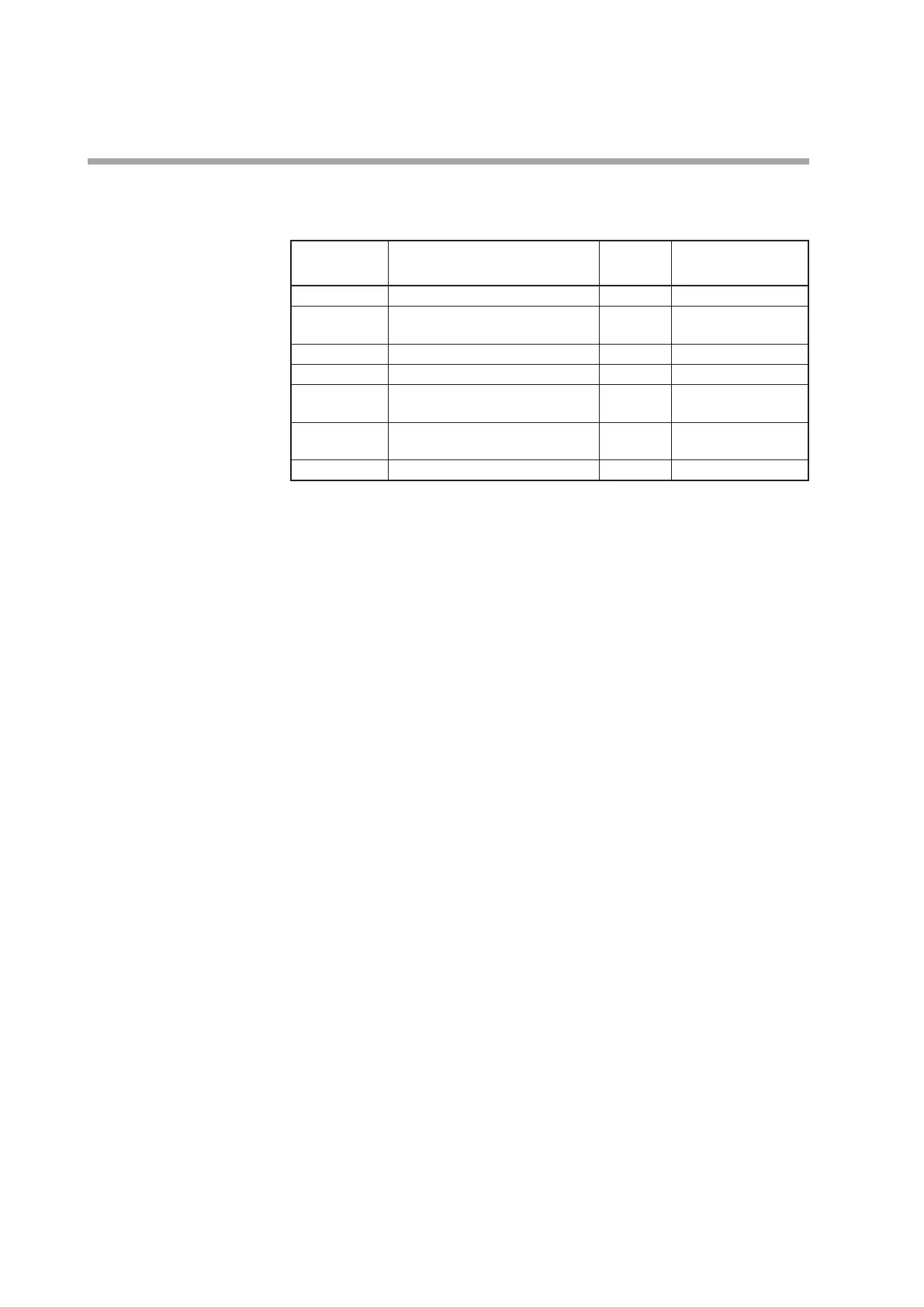7-4
Chapter 7. CPL COMMUNICATION FUNCTION
List of data link layer data definitions
The following list shows the definitions for data in the data link layer:
Data name Character code Number of
characters
Meaning of data
STX 02H 1 Start of message
Station
address
0 to 7FH are expressed as
hexadecimal character codes.
2
Identification of device
to communicate with
Sub-address "00" (30H, 30H) 2 No function
Device code "X" (58H) or "x" (78H) 1 Device type
ETX ETX (03H) 1 End position of the
application layer
Checksum 00H to FFH are expressed as two-
digit hexadecimal character codes.
2
Checksum of message
Delimiter CR (0DH), LF (0AH) 2 End of message
Description of data items
• STX (02H)
When STX is received, the device judges this to be the start of the send message.
For this reason, the device returns to the initial state whatever reception state
it was in, and processing is started on the assumption that the STX, the first
character, has been received. The purpose of this is to enable recovery of the
device's response at the next correct message (e.g. RETRY message) from the
master station in the event that noise, for example, causes an error in the sent
message.
• Station address
Of the messages sent by the master station, the device creates response messages
only when station addresses are the same. Station addresses in the messages are
expressed as two-digit hexadecimal characters.
The station address is set up by the station address setup (setup setting
C65
).
However, when the station address is set to 0 (30H 30H), the device creates no
response even if station addresses match.
The device returns the same station address as that of the received message.
• Sub-address
The device does not use the sub-address. For this reason, set "00" (30H 30H).
The device returns the same sub-address as that of the received message.
• Device code
The device sets X (58H) or x (78H) as the device code. This code is determined
for each device series, and other codes cannot be selected. The device returns the
same device code as that of the received message. X (58H) is used as the default,
and x (78H) is used for judging the message as the resend message.
• ETX
ETX indicates the end of the application layer.
• Checksum
This value is for checking whether or not some abnormality (e.g. noise) causes
the message content to change during communications.
The checksum is expressed as two hexadecimal characters.

